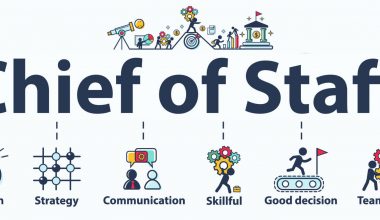You must create a wireframe before deciding on a logo, sitemap, fleshed-out content, or branding font. A wireframe is vital for mapping out what your end-users UX will be like. There are certain questions you must ask when you create a wireframe prototype for your product. To make things easier, here are some wireframe tools available for you, including free and open source options.
What Are Wireframe Tools?
Wireframe tools are software that is designed to let you quickly and easily create a wireframe layout.
Overview Of The Best Wireframe Tools
Here are some of the best wireframe tools available in 2023.
#1. Lucidchart
Lucidchart is a web-based wireframe program that helps you visualize complicated concepts and drive stakeholder alignment.
The program has a large collection of forms that may be used to create practically any wireframe you can dream of. These wireframes may be used for everything from a website to a mobile app, and there are several templates available to help you get started.
The collaboration tools of Lucidchart will assist your team in keeping the dialogue within the canvas and focusing on their task. In an interactive environment, they can discuss, highlight elements for each other, and co-create.
#2. InVision
InVision is a real-time workspace that centralizes workflows so that designers can collaborate throughout the life cycle of a project. To help you get results faster, the design software contains over 100 templates from companies like as Microsoft and Atlassian. Editable Google Docs, Mode dashboards, Jira problems, and Kanban boards can also be embedded.
For the design prototype, Invision blends the force of whiteboard collaboration with the clarity of wireframes. Team members can provide input in a style that is easy for everyone to discuss and vote on the best solutions.
Their collaborative canvas enables teams to build low-fidelity prototypes early in the product design process and iterate quickly as the project progresses.
#3. Mockplus
Mockplus is a cloud-based design tool that focuses on team collaboration and an intuitive design experience for rapid prototyping and wireframing.
To create realistic screen designs, you can use the pre-built components, icons, and drag-and-drop functionalities. Members of the team can test the website design in eight different ways before providing comments via the commenting section.
This application is intended to assist you in converting low-fidelity UI designs into interactive wireframes. These serve as fully functional prototypes, allowing stakeholders to see the concepts in action. You can also choose from over 3000 built-in icons, components, and templates.
#4. Justinmind
Justinmind is a free web and mobile wireframe tool that allows you to generate interactive wireframes that you can see and test.
The tool contributes to the wireframing and design of web (Windows/MacOS) and mobile products. Everything from navigation to animations and transitions is covered in the design settings. Designers for mobile devices can select from a library of gestures for rotating, tapping, swiping, scrolling, and pinching.
Designers can use these features to quickly move from prototypes to functioning simulations without writing a single line of code. Interactions can comprise action and condition sequences, providing testers with a genuine experience.
#5. Sketch
Sketch is a Mac-native digital design application that helps you move from idea generation to playable prototypes. It offers quick design, real-time collaboration, and planned developer handover.
This application is a sophisticated editor that gives all of the tools you need to connect your design and development teams, from design to code. Sketch is intended to accelerate productivity. As a result, its Artboard templates enable you to rapidly begin a project in an editable document that you can later save to create your own template. You can also reuse items across projects with Smart Layout, which keeps the padding and spacing between levels in a Symbol when the size of an override changes.
Once you’ve completed a prototype, Libraries and Color Tokens will assist developers in understanding what the design team performed, and an iPhone app may be used to test the prototype as you change it in your Mac.
#6. Pencil Project
Pencil Project is a free GUI prototype tool with an open-source platform that allows for free prototyping.
The tool contains a collection of pre-built shapes for developing various user interfaces. Both Android and iOS user interface stencils are pre-installed, as are web development tools.
General-purpose shapes, flowchart parts, desktop/web designs, and mobile shapes are all included in the template collections. Collections can be dragged and dropped onto the active wireframe. In a logical flowchart, connectors can be used to connect shapes. This tool works with design programs like Flamory.
#7. Framer
Framer is a web builder for creative professionals that offers a simple interface where you can create wireframes for free and pay only when you’re ready to ship.
The tool offers ready-made starter kits and UI components to help you speed up the wireframing process. Grids can be used to organize layouts, and stacks can be used to uniformly space objects. You may also reuse components to make iterations go faster. Flexible templates that you can change for your project are a vital aspect.
You can click buttons, move objects, and customize transitions right away. You can link screens together to develop, test, and iterate until you find the best user process.
#8. Adobe XD
Adobe XD is a well-known vector-based design tool that is included in the Adobe Creative Suite. It was designed for UI and UX design and can be used to create everything from apps to websites.
Designers can develop fluid and dynamic designs that traditional design tools cannot. This platform contains a variety of wireframing templates to help you get started quickly. From wireframing to delivering to the development team, the platform will support the entire process.
Web design, app design, brand design, and game design are all supported by Adobe XD. It enables real-time collaboration by utilizing online features, and teams may engage in co-creation and conversations in a single location. If your designers are already familiar with Adobe products, they will enjoy utilizing XD because it allows them to import their work and streamline their creative process.
#9. FluidUI
FluidUI is a cloud-based platform for prototyping web apps and mobile designs.
Multiple designers and stakeholders can inspect and annotate wireframes before providing feedback in the form of comments. To show features, animations and interactive gestures can be used. These animations can later be utilized as a screenflow map to demonstrate how navigation works in your prototype.
Another wonderful feature is the ability to conduct remote testing with the user. This enables receiving comments on your most recent development easy. The software enables the creation of wireframes with a minimal learning curve. Material design, iOS, and wireframing UI kits are available. Designs can then be instantaneously shared with the rest of the team.
#10. Figma
Figma is a website and graphic design platform. It is focused on the future of the web, and as a result, they seek to offer new and interesting features that will help you go faster from design to development.
It offers wireframe kits to help you evaluate concepts and speed up the design process. In a few steps, you can go from wireframe to clickable prototype and add interactivity without writing any code. Navigation bars, features, headers, and buttons are all built-in website components.
Anyone may construct wireframes using the offered kits thanks to the drag-and-drop interface. Components can be modified straight from the browser to suit the desired aesthetic.
The Best Free and Open Source Wireframe Tools
Here are several free and open-source wireframe tools that can be used by both designers and non-designers to produce free wireframes.
#1. Figma
Figma is an all-in-one design tool for UX/UI professionals that includes a robust free option for developing wireframes. Its beginning plan is fully free and one of the most extensive free solutions on this list, with three active projects, a 30-day revision history, two editors available at all times, and unlimited cloud storage.
The first paid tier is $12/mo per editor (free for students with a verified school email address) and includes an upgrade to unlimited active projects and version history, configurable permissions, private boards, and team collaboration tools.
#2. InVision
InVision is a wireframing, prototyping, and mockup tool for designers that is one of the most well-known brands in the wireframing software industry.
This tool arose as a result of apps, notably Photoshop (at the time), lacking screens that could interact with one another (which is also why many people switched to Sketch).
It is necessary to use an external application (we like Sketch) to build the screens that will be imported into InVision.
Individual UX/UI designers can use InVision’s free wireframing plan to develop one live prototype or wireframe at any time. It is a simple plan intended mostly for freelancers and individuals who do not work cooperatively.
The next level of InVision pricing is $15 per month per user and allows design teams to build up to three projects that can be active at any time – with full feature access to the InVision app.
#3. Draw.io
Draw.io is a completely free and open-source wireframing software with a user interface that is comparable to Google Docs. It has a basic design yet tremendous functions. Simply, it has the most comprehensive free offering of any of the free wireframing tools on this list.
Users can save designs to Google Drive, Microsoft OneDrive, their desktop, or directly supported integrations like Gliffy and Lucidchart. It also has an active open-source community that works to resolve bugs and issues and introduce new features.
#4. Pencil Project
Pencil Project is a completely free and open-source wireframing and prototyping tool. It provides an infinite number of designs for UX/UI professionals to use, and all of its features are entirely free.
Another advantage is the open-source community, which means that developers are constantly updating the program with new features and security.
#5. Miro
Miro, formerly known as RealTimeBoard, is an online whiteboarding tool for distributed product and UX teams. It is a rapid prototyping tool that is incredibly collaborative and similar to using a very light version of figma.
Miro isn’t as robust as other dedicated prototype wireframe tools, which may appear to be a disadvantage, but it actually works to its advantage because its restrictions allow for speedier prototyping, with an experience that feels like sketching on a whiteboard in a virtual room with the rest of your team.
Miro is free for the first three boards, after which each board costs $3 each day logged in, or you may create an infinite number of boards for $15 per month per user.
#6. Wireframe.CC
Wireframe.cc is a free browser-based wireframing solution for mobile designers. It’s a simple and cluster-free application with a slick UI that’s accessible from anywhere via a browser. The free edition allows users to build one simple wireframe at a time and includes options for customizing the grid arrangement, font, canvas size, and other features.
The next level of premium pricing is $16/month per user and includes unlimited projects and revisions, custom branding, and direct export to PNG format.
#7. MockFlow
MockFlow is an all-in-one user interface tool that provides free mockup and wireframing features as part of its lifelong free plan. Its free version supports one active UI project at a time, two reviewers per project for collaboration, criticism, and sharing, and basic wireframing and mockup tools.
MockFlow’s entry-level commercial service, which includes unlimited projects and reviewers, version history, and MockFlow’s UI asset collection, starts at $14/mo per user.
#8. Jumpchart
Jumpchart is a web-based wireframing application that allows designers to mock up and prepare a website wireframe to communicate with key stakeholders, clients, developers, and others. It comes with one active project at a time, 10 MB of storage, 10 pages per month, and two users per project.
Jumpchart’s free tier includes 5 projects, 1 gig of storage, 25 pages per month, and 5 users per project.
#9. Framebox
Framebox is the list’s second entirely free wireframing tool. With no premium plans, all of Framebox’s functionality are included straight on their website’s user-friendly web interface. It’s an all-in-one drag-and-drop tool that allows designers to draw wireframes using UI elements and allows users to sign in to save work and view revision history. UX/UI designers can even email their work with a specific link to their entire team or important stakeholders for quick online sharing and feedback.
#10. Mydraft.CC
Mydraft.cc is a completely open-source and free wireframing application that can be accessed from any browser. It offers a clean and basic wireframing canvas and comes with hundreds of free shapes and icons, as well as a simple search bar.
It’s a powerful wireframe editing program that is kept up to date by their developer community, with the most recent update being two weeks ago as of the publication date of this article.
Is A Wireframe A UX?
Wireframing is a UX design technique that allows UX designers to define and arrange the information hierarchy of their design for a website, app, or product.
What Are the Types of Wireframes?
Wireframes are classified into three types:
- Low-fidelity wireframes.
- Mid-fidelity wireframes.
- High-fidelity wireframes
In Conclusion,
When it comes to creating an efficient, user-friendly app or website, the best wireframe tools can make all the difference. Learn how product managers may use wireframes to understand complex user flows and how to use them effectively.
There are numerous solutions available, ranging from low-fidelity tools to entire packages with complex functionality. Remember that whichever wireframing tool you choose should offer a collaborative platform for developers, designers, and stakeholders.
Related Articles
- WHAT IS A WIREFRAME: Web Design, Mockup, UX, & Difference
- WEBSITE WIREFRAME: How to Build a Basic Website Wireframe
- WHAT IS RAPID PROTOTYPING: Definition, Methods, Benefits & Best Practices
- Features of Interaction Between a Web Designer and a Developer






